
It is time to play a Wild Card! Every now and then, a book that I have chosen to read is going to pop up as a FIRST Wild Card Tour. Get dealt into the game! (Just click the button!) Wild Card Tours feature an author and his/her book's FIRST chapter!
You never know when I might play a wild card on you!
Today's Wild Card author is:
and the book:
Authentic (January 1, 2008)
ABOUT THE AUTHOR:
 Peter Holmes has combined a career in business and management consultancy with service in the church and international missions. He holds an MA in pastoral psychology and a doctorate in therapeutic faith community and is a lead reviewer with the Royal College of Psychiatrists’ therapeutic community program.
Peter Holmes has combined a career in business and management consultancy with service in the church and international missions. He holds an MA in pastoral psychology and a doctorate in therapeutic faith community and is a lead reviewer with the Royal College of Psychiatrists’ therapeutic community program. Since his late teens, Dr. Holmes has been helping people grow in their intimacy with Christ. This passion has prompted his involvement in Christian missions in the Middle East, Asia, Europe, and Africa, including war-torn Rwanda. He is co-author of the book Christ Walks Where Evil Reigned, a social commentary, in a Rwandan setting, focusing on how darkness can consume a nation and how hope and transformation can be released. He has developed a therapeutic discipleship program available in seminars and in books such as Letting God Heal, Changed Lives, and Becoming More Like Christ. Among the nine books he has authored, Becoming More Human, Trinity in Human Community, and Church as a Safe Place describe the extension of his ideas in local churches. Dr. Holmes has joint responsibility for teaching, preaching, and pastoral care at Christ Church Deal, Kent, UK, the fifth church he has helped to plant.
His latest book, Church as a Safe Place, co-authored with his friend and colleague Susan B. Williams, delves into a subject he knows all too well—the many forms of abuse that are often perpetrated in and through the church. “Writing a book like this would be a challenge for any person. No one is exempt from abuse or from being abusive,” he states. “We may like to think that we have never been that bad or done such things, but we probably have. As I wrote the book, I remained mindful that I have been both the abuser and the abused, that I have been on both sides of the relationship.”
Dr. Holmes is a qualified trainer (business coach) and business psychologist, specializing in emotional intelligence, leadership, and team-building. He provides expertise in business start-ups and change management and leads conflict management and reconciliation initiatives. He also offers these skills in local church contexts. Dr. Holmes has worked with international aid programs to develop business initiatives overseas. He is a member of the Tyndale Fellowship and a fellow of the Chartered Management Institute.
Dr. Holmes is married to Mary, an American. The couple splits their time between Dr. Holmes’s native Kent, England and Tiki Island, a small community on the Texas coast. Though his single-minded dedication to helping others find wholeness in Christ is his greatest hobby, he is also a fan of classic cars and has rarely been without one over the last thirty years.
 Susan B. Williams is driven by a passion for promoting positive change, a passion reflected in every area of life—her education, her profession, and her ministry. As a specialist in personal, relational, and organizational change, she holds an MPhil and PhD in the personal and social dynamics of transformative change. Williams has authored several books, including Changed Lives, Becoming More Like Christ, and Church as a Safe Place with co-author Peter R. Holmes, with whom she also wrote Passion for Purity. She specializes in working with local churches and church members as they pursue transformative change, particularly in the therapeutic community of her home church, Christ Church Deal, Kent, UK.
Susan B. Williams is driven by a passion for promoting positive change, a passion reflected in every area of life—her education, her profession, and her ministry. As a specialist in personal, relational, and organizational change, she holds an MPhil and PhD in the personal and social dynamics of transformative change. Williams has authored several books, including Changed Lives, Becoming More Like Christ, and Church as a Safe Place with co-author Peter R. Holmes, with whom she also wrote Passion for Purity. She specializes in working with local churches and church members as they pursue transformative change, particularly in the therapeutic community of her home church, Christ Church Deal, Kent, UK.As she approached the topic for her latest book, Church as a Safe Place, Williams experienced some transformative change in her own life. “I had known of mistakes I had made in my ministry. I could recall times when I had spoken without love, times when something I had done had felt hurtful to others. In the past, I would have excused myself or assumed that those people were overreacting,” she recalls. “Apparently, this book has been the Lord’s opportunity to teach me something I wish I’d learned many years ago—that when someone feels hurt by me I must allow myself to meet them in their pain.”
In the business world, Williams has earned the reputation of a savvy management consultant with extensive experience in diagnostics and problem solving, as she regularly draws on the wisdom she has gained from her experience managing change in both the public and private sector. She is a veteran business trainer and holds a diploma in Learning and Development. She is also a licensed assessor and quality systems verifier and a Fellow of the Institute of Learning.
Williams has been a financial director and managing director in companies in the education and training sector, in biotechnology, in property management, and in other fields. She is also a director of several businesses and charities. Her teaching and training are also informed by her remarkable personal journey, outlined in her autobiography, Letting God Heal.
Williams is developing some of her ideas regarding the dynamics of transformative change with the Royal College of Psychiatrists as Deputy Chairperson of the Advisory Group in Therapeutic Environments and as a Lead Reviewer of therapeutic communities.
Though Williams’ busy schedule includes little free time, she does find opportunities to play the clarinet in a local symphonic band and her church worship team. She resides in Deal, Kent, UK.
Product Details:
List Price: $16.99
Paperback: 330 pages
Publisher: Authentic (January 1, 2008)
Language: English
ISBN-10: 1860246036
ISBN-13: 978-1860246036
AND NOW...THE FIRST CHAPTER:

Life in an Unsafe World
In this chapter we take an overview of our society and conclude that abuse is more common than we might imagine or admit. Many people feel unsafe today. Which begs the question: Where abuse is concerned, is the Church an exception or is it like other institutions? We end the chapter by suggesting that society is continuing to fragment, with more and more people living alone or in broken, damaged relationships.
Nelson Mandela, writing the foreword to the World Health Organization’s World Report on Violence and Health, suggests that the twentieth century will be remembered as a century marked by violence and abuse. There has been more abuse,1 violence, death, and even genocide than ever before. The statistics speak for themselves. More recently, Mandela’s views have been endorsed by Niall Ferguson in his exhaustive work The War of the World, in which he asks why the twentieth century has been the bloodiest century yet.2
As authors, we have been directly engaged in this violence, not only in our pastoral counseling, but specifically in our efforts to develop a model of dealing with the post traumatic stress suffered by victims of the genocide in Rwanda.3 This has proven a huge challenge. Most Western people have little awareness of the difficulties facing the people of Rwanda. With physical and sexual abuse, torture, murder, and loss, come a range of dehumanizing feelings that make us less able to be human and more able to hurt because we have been hurt.
Mandela observes that one of the tragedies of this legacy is the way that abuse reproduces itself. Instead of developing an aversion to abuse, victims learn abuse from victimizers and, perhaps unintentionally, begin to perpetuate it. He believes that our only hope for breaking these cycles is our willingness to expose such abuse through the democratic process. “Safety and security don’t just happen,” he says, “they are the result of collective consensus and public investment.”4 Collective consensus in this field is focused on the area of human rights, be they the right of the mentally ill to be treated with dignity, the right of children to be protected or of a divorced mother to have the same standard of living as her professional ex-husband. Outside the Church the contemporary human rights agenda is moving fast and furious.
So what is the response of the Church to these twentieth century developments? In our local congregations, how can we respond to the pain, betrayal, fear, and loss being experienced in the culture around us? Also, how effective are we at engaging in public debate on these issues? The answer we are proposing in this book is that the Church needs to intentionally become a “safe place,” where those who are hurting can find comfort and healing in restorative relationships, and where people with no Church background can feel that their personal rights are being respected. But achieving this is a daunting task. Let us look at some of the reasons why.
Abuse is Normal
Mandela points out that those who live with violence and its abuse day in and day out begin to assume that it is an intrinsic part of the human condition. People not only resign themselves to it, they accept it as normal. So abuse becomes deeply rooted in the social, cultural, and economic fabric of human life. Today, whether through personal experience, the eye of television and other news media, or by means of video games and films, assault by one individual against another is part of our daily experience. Most video games, for instance, are violent. They are not programs teaching us ethical love. And once abuse and violence become “normal,” it is very hard to change.
But it is not only individuals who learn to abuse. Institutions do, too. It is particularly disturbing when the systems and organizations that are intended to stand against such abuse themselves become the abusers. As Mandela knew well, governments can be abusive. During the last century, whole countries, even, practiced democide—the eradication of entire ethnic groups—under leaders such as Stalin, Hitler, and Idi Amin. Such crime is now a major concern to modern society.5 We have seen it repeated over and over in recent history, from Hiroshima through to Mao, the genocide of Rwanda, the abuse of the Kurds in Turkey and Iraq, and the stateless Palestinians.
Modern Europe is not exempt. Note the second-class citizenship of the Turkish and Algerian gastarbeiters (guest workers) or the illegal white Russian, Eastern European, Vietnamese, and Thai sex-slave victims being imported into our countries for our gratification. Likewise, consider the treatment of the native Indian, the damage from the Vietnam War, and human rights abuses by the military in Iraq. Some would even point to the retaliatory imperialism of the American government. All of these, along with numerous other forms of abuse, are allowed freedom to exist here, in and on behalf of our “civilized” society.
Behind such extreme abuse lies the issue of power, which, like that of abuse, is a vast and complex subject.6 When given power, some people sometimes change for the worse. Power by people over people becomes the power to abuse. What is becoming evident from “power” research is that when people have the power or opportunity to abuse, some always will. This will become a key theme of this book.
But the world of dictators is not the only arena in which power is abusively used. Here in the UK, the Macpherson report, published following an enquiry into the murder of a black teenager, Stephen Lawrence, documented institutional racism in the London Metropolitan Police Force. It distinguishes between abuse by individual policemen and an organizational structure that allows racism to exist.7 Societal abuse is widespread. Even the most mundane access to power creates the opportunity for misuse and abuse. There will always be some who abuse simply because they have the opportunity. Whether it is driving above the speed limit, using the “black economy” to avoid paying tax, pilfering pens and paper from an employer or fudging one’s tax returns, abuse of power is endemic in our Western society. At one time or another we have all misused the power we have.
Whenever someone sets a standard or lays down the law, some of us will have a tendency to lean against it, pushing out the boundaries a bit farther. Toddlers do it: “I wish you were dead!” Teenagers do it: “I hate him!” It is rife in many supposedly adult environments, too: “I’d love to teach her a thing or two!” Many of us perceive the “institution,” political leaders and even our bosses as the enemy so we deviously challenge or disobey their wishes. We wouldn’t think that we were being abusive, of course. We merely take a few “liberties” from time to time.
Feeling Unsafe
The misuse of power is so prevalent in our society that it raises the question of whether anyone can ever feel safe. Have we all been abused? Are we all abusers? Do we all feel unsafe at one time or another? The huge growth in security systems, personal alarms, tinted windows on cars, expensive locks, and closed circuit TV in both public places and homes is clear testimony that many of us do not feel safe and are afraid of abuse.
Most of us have had the experience of feeling unsafe, vulnerable, and many of us will be able to recite a range of times when we have been abused or have not felt safe. Our examples may include standing in a bus queue, traveling with someone who is not a “safe” driver or no longer being able to trust someone we once relied on. When we say that we live in an abusive society, we are saying that most of us, at one time or another, have felt the lingering aftertaste of hurt or abuse.
The reaction of some of you reading this book may be that feeling unsafe is not your own personal experience. Perhaps you cannot recall ever having been abused by others. Nor do you feel that you are at risk of being abused. If this is the case, then we are pleased for you. But think of those you know, friends and family, who do feel unsafe. Most of those close to you will at one time or another have felt vulnerable or abused, though many have coping mechanisms that help repress or deny the harm.
Having met many hundreds of people, Christian and non-Christian, in a pastoral capacity, we have noticed an interesting trend. Many people are becoming aware that something is not “right,” but they are unable to identify what that something is. What they will then often come to realize is that they have been or are being abused. Or perhaps they are abusing themselves. Maybe the word “abuse” seems a bit too strong, but they realize they are feeling hurt. For instance, many people are in abusive personal relationships or have bosses who are abusing them. Or they have been abused in the past, but have been denying how deeply it has hurt them.
Some of these people may be seeking Christ in a deeper way or trying to live more responsible lives, but their circumstances and history are standing against this. Good is not something that happens to us unless we are able to imagine it. Likewise, until we admit the truth, it is hard to change. So in our ministry we frequently find ourselves asking, “Do you realize that is abusive?” Or, “Why are you allowing them to do this to you?” Until a solution is found, human nature will often be reluctant to admit how bad bad really is. To admit to abuse, or to be honest about what took place, is only possible when one knows that others can help resolve it. This understandable reluctance to own up to abuse, or to feelings of being unsafe, is sadly very common.
Is the Church a Safe Place?
If abuse and not feeling safe is part of modern society, how do we feel about our churches? Is being part of a local church a safe experience for us or are churches also places that are not safe? Maybe the fellowship or support group is not safe? Or the youth work we help with? Or are we part of the choir and feel unsafe? Again, the same principle seems to apply. Some of us will be in abusive or unsafe situations in our congregations, but will not be willing to admit this unless someone else gives us permission. It is often not until we are with a safe friend, pastor or counselor that we begin to admit that we do not have a way of dealing with this. They may be able to help us but only if we are honest with ourselves and them.
We are not suggesting that every church is unsafe. Neither are we giving everyone permission to accuse others unjustly. But our congregations are part of our Western society, and can be as abusive as the society they are part of. One consequence is that when congregations become abusive or hurtful environments, it is all too easy for the organization and its members to develop a tolerance to it. It becomes normal. Whether the abuse starts with a leader or a powerful person or group, it will often spread until even the victims become abusive, either to themselves or to someone else. Numerous incidents of abuse that result in situations where we have been hurt or feel unsafe are never addressed. We either deny them or pretend they are not as bad as they really are. Or perhaps we try to raise the problem but no one listens so we give up or quietly leave.
The Church has an historic problem to contend with. Many of us have grown up in congregations with traditions that for centuries have been helpful in establishing the uniqueness of the Church. Yet today the unchurched would consider them a breach of human rights—that is, abusive. Teaching that seems safe or “normal” to us because of its familiarity might be considered unsafe by newcomers, outsiders or those who are postmodern in their ideas. Perhaps we think it is normal to be told we are sinners. Or to be told we must forgive seventy times seven as the leader in his sermon mocks us publicly yet again. Cruciform theology (dying to self) is sound Biblical teaching but can be interpreted in ways that postmodern people (and perhaps even God) find unacceptable. For instance, being “dead to self” can mean we no longer have any rights. We agree with such teaching, but to the unchurched it can all sound too (self-) abusive.
From 1850 to 1900 Evangelicalism ruled in Europe. The Church had enormous influence and prestige, establishing values and ideals for itself and society as a whole. This was not dissimilar to the growth of the Wesleyan movement in North America.8 Many of these cultural values survive today and are part of the warp and weft of church life.9 In this book we will be suggesting that not all these beliefs, values, and associated practices are of benefit in the way they may have been in the past. For instance, in North America, when the topic of abuse in the Church is raised, people tend to think immediately of the scandals and cover-up of sexual abuse in the Catholic Church. We will be making reference to this. And we will also be suggesting that the Protestant Church is not immune. In this book we will be suggesting that in reviewing what is safe or harmful, we must consider more carefully the perspective of the unchurched newcomer. In our work with many unchurched we have learned that this is one of the main reasons why they never want to go near a church. Or, along similar lines, it is why some Christians leave the Church, becoming post-Evangelical.10
For many of us, of course, local church life is an enjoyable and safe experience. But you may be in a congregation where it could improve. In this book we will be suggesting that a great deal of “soft” abuse goes on un-checked in local church life, for instance, the subtle control of others in influencing who we should be friends with or a theology that penalizes those who are suffering—“You’re sick because you lack faith.” There can also be an exclusivity that makes an outsider feel unwelcome or pressure to attend more meetings than are healthy for family life or a family feeling judged because the parents are not married. This book draws on over a hundred experiences and illustrations of such harm and abuse in church settings, which we hope we can all learn from.
What we will be noting is that much of this damage never surfaces, both because of cover-ups by leadership and denial by members. It is often so much easier to walk away than confront an issue. Newcomers will also leave because they concede that congregational life will not change to accommodate their needs. Perhaps it is time for us to listen more carefully to those who are on the fringe or who are leaving?
As Christians, many of us have no illusions about the kind of society that we live in. We are pragmatic, and even cynical, while campaigning for human rights. Yet we are in danger of attributing messianic qualities to our church leaders. Sometimes we refuse to see that they struggle to handle power with integrity, and we are unable to accept that, because they are not safe people they cannot create a safe environment for us. We are often passionately loyal to our congregation and its leaders, and this can be a good thing. But sometimes it isn’t.
In this book we are suggesting that it is unrealistic to think that people who make others feel unsafe in one setting, say, in business life, are somehow transformed into qualitatively different people when they are in a church environment, that they somehow become safe when they are being “Christian.” Rather than clinging to the illusion that the Church is free from abuse, it is more helpful for us to assume that the harm prevalent in society as a whole is also present in the Church. Instead of thinking that the damage that we do hear about in our churches is an exception to the rule, it is more realistic to accept that unsafe behavior prevails in the Church, too, albeit in a variety of ways.
In his summary of the violence of the twentieth century, Mandela suggests that we should take national as well as corporate initiatives to stop such violence and abuse. Surely the Church should lead the way in creating structures and guidelines that minimize the potential for abuse and harm, and should be seen to be responding healthily when and where damage has been identified?
We are suggesting that making congregational life a safer place is a learning journey. While creating what is safe for people, we must retain the ability to speak the truth to one another. Holding this balance is a real challenge. The large number of abused people suggests we have a long way to go.
Preferring Isolation?
Returning to the broad picture, we cannot avoid the fact that social relations in our Western society are breaking down. Around 25 per cent of people in the UK now live alone, while a growing number “live together apart.”11 This phrase refers to two people who spend some time together, perhaps a few nights a week, while maintaining separate homes that they can retreat into.12 Any property developer will tell you that one bed units and bedsits are the biggest area of demand in the housing market. The “family home” is not the prized property it used to be, either side of the Atlantic.
This trend is part of a complex social change that is taking place in our society. It is driven by a number of factors, including greater economic wealth, social welfare support, and selfism—a selfishness that puts “number one” at the center of our lives. But more disturbing is the fact that many of us feel safer when we are in control. So living alone is an obvious preference. We have learned over the years that other people are unsafe. We may need others, but are more guarded toward them than we would have been in the past, evoking echoes of Sartre’s, “hell is other people.” It is essential that the Church buck this trend if churches are to be authentic faith “communities.” But in an age where being safe increasingly equates to being alone, offering people persuasive reasons for being together and staying together is a much stiffer challenge than it used to be.
Most people will say that a safe place is where they feel safe. For many men safety is their car when they are driving! Or their garage, workshop, greenhouse, garden shed or golf course. For some women this safe place will be their kitchen or (hopefully) their bedroom. For other women being safe is being with a man they love, being with their children and grandchildren or behind locked doors in their one-bed apartment. Is this what safety really means? Do we have to avoid other people and create highly controlled environments in order to feel secure and protected? In the next chapter we will explore God’s idea of what is safe—something contrasting to the norm in our society today.
Questions to Ponder
1. What do you think about Mandela’s statement that the twentieth century has been the most violent so far?
2. In what ways does our contemporary culture impact our congregations?
3. In what ways, if any, is the Church different from the world around it?
4. If there has been a time when you have been abused in the Church, how do you now feel about it?
5. If you know of a newcomer who has come to your church having been hurt, how can you help that person to feel safe?
6. How would you describe a “safe place?”
Notes
1 E. Krug, et al., World Report on Violence and Health (Geneva: World Health Organization, 2002).
2 N. Ferguson, The War of the World (London: Allen Lane, 2006).
3 I (Peter) am currently writing a book with the Archbishop of Rwanda, His Grace Emmanuel Kolini, on the subject of violence and genocide. Hopefully, it will be published early 2008.
4 Foreword—Krug, et al., World Report.
5 S. Tombs and D. Whyte, Unmasking the Crimes of the Powerful: Scrutinizing states and corporations (Oxford: Pater Lang, 2003).
6 K. Dowding, Power (Buckingham: Open University Press, 1996), 1ff.
7 W. Macpherson, et al., The Stephen Lawrence Enquiry (London: The Stationery Office, 1999).
8 R. Finke and R. Stark, “How the Upstart Sects Won America: 1776–1850,” Journal of the Scientific Study of Religion 28 (1989), 1:27–44.
9 D.W. Bebbington, The Dominance of Evangelicalism: The age of Spurgeon and Moody (Nottingham: Inter-Varsity Press, 2006).
10 G. Lynch, After Religion: “Generation X” and the search for meaning (London: Darton, Longman & Todd, 2002).
11 Martin noted in Sickening Mind that “if present trends continue over one third of British homes will be occupied by a solitary person by the year 2106.”
12 A. Milan and A. Peters, “Couples living apart,” Canadian Social Trends (Summer 2003), Office for National Statistics, “First estimates of the number of people ’Living Apart Together’ in Britain” (2005, online). Available from (accessed 10 June 2006.
In this chapter we take an overview of our society and conclude that abuse is more common than we might imagine or admit. Many people feel unsafe today. Which begs the question: Where abuse is concerned, is the Church an exception or is it like other institutions? We end the chapter by suggesting that society is continuing to fragment, with more and more people living alone or in broken, damaged relationships.
Nelson Mandela, writing the foreword to the World Health Organization’s World Report on Violence and Health, suggests that the twentieth century will be remembered as a century marked by violence and abuse. There has been more abuse,1 violence, death, and even genocide than ever before. The statistics speak for themselves. More recently, Mandela’s views have been endorsed by Niall Ferguson in his exhaustive work The War of the World, in which he asks why the twentieth century has been the bloodiest century yet.2
As authors, we have been directly engaged in this violence, not only in our pastoral counseling, but specifically in our efforts to develop a model of dealing with the post traumatic stress suffered by victims of the genocide in Rwanda.3 This has proven a huge challenge. Most Western people have little awareness of the difficulties facing the people of Rwanda. With physical and sexual abuse, torture, murder, and loss, come a range of dehumanizing feelings that make us less able to be human and more able to hurt because we have been hurt.
Mandela observes that one of the tragedies of this legacy is the way that abuse reproduces itself. Instead of developing an aversion to abuse, victims learn abuse from victimizers and, perhaps unintentionally, begin to perpetuate it. He believes that our only hope for breaking these cycles is our willingness to expose such abuse through the democratic process. “Safety and security don’t just happen,” he says, “they are the result of collective consensus and public investment.”4 Collective consensus in this field is focused on the area of human rights, be they the right of the mentally ill to be treated with dignity, the right of children to be protected or of a divorced mother to have the same standard of living as her professional ex-husband. Outside the Church the contemporary human rights agenda is moving fast and furious.
So what is the response of the Church to these twentieth century developments? In our local congregations, how can we respond to the pain, betrayal, fear, and loss being experienced in the culture around us? Also, how effective are we at engaging in public debate on these issues? The answer we are proposing in this book is that the Church needs to intentionally become a “safe place,” where those who are hurting can find comfort and healing in restorative relationships, and where people with no Church background can feel that their personal rights are being respected. But achieving this is a daunting task. Let us look at some of the reasons why.
Abuse is Normal
Mandela points out that those who live with violence and its abuse day in and day out begin to assume that it is an intrinsic part of the human condition. People not only resign themselves to it, they accept it as normal. So abuse becomes deeply rooted in the social, cultural, and economic fabric of human life. Today, whether through personal experience, the eye of television and other news media, or by means of video games and films, assault by one individual against another is part of our daily experience. Most video games, for instance, are violent. They are not programs teaching us ethical love. And once abuse and violence become “normal,” it is very hard to change.
But it is not only individuals who learn to abuse. Institutions do, too. It is particularly disturbing when the systems and organizations that are intended to stand against such abuse themselves become the abusers. As Mandela knew well, governments can be abusive. During the last century, whole countries, even, practiced democide—the eradication of entire ethnic groups—under leaders such as Stalin, Hitler, and Idi Amin. Such crime is now a major concern to modern society.5 We have seen it repeated over and over in recent history, from Hiroshima through to Mao, the genocide of Rwanda, the abuse of the Kurds in Turkey and Iraq, and the stateless Palestinians.
Modern Europe is not exempt. Note the second-class citizenship of the Turkish and Algerian gastarbeiters (guest workers) or the illegal white Russian, Eastern European, Vietnamese, and Thai sex-slave victims being imported into our countries for our gratification. Likewise, consider the treatment of the native Indian, the damage from the Vietnam War, and human rights abuses by the military in Iraq. Some would even point to the retaliatory imperialism of the American government. All of these, along with numerous other forms of abuse, are allowed freedom to exist here, in and on behalf of our “civilized” society.
Behind such extreme abuse lies the issue of power, which, like that of abuse, is a vast and complex subject.6 When given power, some people sometimes change for the worse. Power by people over people becomes the power to abuse. What is becoming evident from “power” research is that when people have the power or opportunity to abuse, some always will. This will become a key theme of this book.
But the world of dictators is not the only arena in which power is abusively used. Here in the UK, the Macpherson report, published following an enquiry into the murder of a black teenager, Stephen Lawrence, documented institutional racism in the London Metropolitan Police Force. It distinguishes between abuse by individual policemen and an organizational structure that allows racism to exist.7 Societal abuse is widespread. Even the most mundane access to power creates the opportunity for misuse and abuse. There will always be some who abuse simply because they have the opportunity. Whether it is driving above the speed limit, using the “black economy” to avoid paying tax, pilfering pens and paper from an employer or fudging one’s tax returns, abuse of power is endemic in our Western society. At one time or another we have all misused the power we have.
Whenever someone sets a standard or lays down the law, some of us will have a tendency to lean against it, pushing out the boundaries a bit farther. Toddlers do it: “I wish you were dead!” Teenagers do it: “I hate him!” It is rife in many supposedly adult environments, too: “I’d love to teach her a thing or two!” Many of us perceive the “institution,” political leaders and even our bosses as the enemy so we deviously challenge or disobey their wishes. We wouldn’t think that we were being abusive, of course. We merely take a few “liberties” from time to time.
Feeling Unsafe
The misuse of power is so prevalent in our society that it raises the question of whether anyone can ever feel safe. Have we all been abused? Are we all abusers? Do we all feel unsafe at one time or another? The huge growth in security systems, personal alarms, tinted windows on cars, expensive locks, and closed circuit TV in both public places and homes is clear testimony that many of us do not feel safe and are afraid of abuse.
Most of us have had the experience of feeling unsafe, vulnerable, and many of us will be able to recite a range of times when we have been abused or have not felt safe. Our examples may include standing in a bus queue, traveling with someone who is not a “safe” driver or no longer being able to trust someone we once relied on. When we say that we live in an abusive society, we are saying that most of us, at one time or another, have felt the lingering aftertaste of hurt or abuse.
The reaction of some of you reading this book may be that feeling unsafe is not your own personal experience. Perhaps you cannot recall ever having been abused by others. Nor do you feel that you are at risk of being abused. If this is the case, then we are pleased for you. But think of those you know, friends and family, who do feel unsafe. Most of those close to you will at one time or another have felt vulnerable or abused, though many have coping mechanisms that help repress or deny the harm.
Having met many hundreds of people, Christian and non-Christian, in a pastoral capacity, we have noticed an interesting trend. Many people are becoming aware that something is not “right,” but they are unable to identify what that something is. What they will then often come to realize is that they have been or are being abused. Or perhaps they are abusing themselves. Maybe the word “abuse” seems a bit too strong, but they realize they are feeling hurt. For instance, many people are in abusive personal relationships or have bosses who are abusing them. Or they have been abused in the past, but have been denying how deeply it has hurt them.
Some of these people may be seeking Christ in a deeper way or trying to live more responsible lives, but their circumstances and history are standing against this. Good is not something that happens to us unless we are able to imagine it. Likewise, until we admit the truth, it is hard to change. So in our ministry we frequently find ourselves asking, “Do you realize that is abusive?” Or, “Why are you allowing them to do this to you?” Until a solution is found, human nature will often be reluctant to admit how bad bad really is. To admit to abuse, or to be honest about what took place, is only possible when one knows that others can help resolve it. This understandable reluctance to own up to abuse, or to feelings of being unsafe, is sadly very common.
Is the Church a Safe Place?
If abuse and not feeling safe is part of modern society, how do we feel about our churches? Is being part of a local church a safe experience for us or are churches also places that are not safe? Maybe the fellowship or support group is not safe? Or the youth work we help with? Or are we part of the choir and feel unsafe? Again, the same principle seems to apply. Some of us will be in abusive or unsafe situations in our congregations, but will not be willing to admit this unless someone else gives us permission. It is often not until we are with a safe friend, pastor or counselor that we begin to admit that we do not have a way of dealing with this. They may be able to help us but only if we are honest with ourselves and them.
We are not suggesting that every church is unsafe. Neither are we giving everyone permission to accuse others unjustly. But our congregations are part of our Western society, and can be as abusive as the society they are part of. One consequence is that when congregations become abusive or hurtful environments, it is all too easy for the organization and its members to develop a tolerance to it. It becomes normal. Whether the abuse starts with a leader or a powerful person or group, it will often spread until even the victims become abusive, either to themselves or to someone else. Numerous incidents of abuse that result in situations where we have been hurt or feel unsafe are never addressed. We either deny them or pretend they are not as bad as they really are. Or perhaps we try to raise the problem but no one listens so we give up or quietly leave.
The Church has an historic problem to contend with. Many of us have grown up in congregations with traditions that for centuries have been helpful in establishing the uniqueness of the Church. Yet today the unchurched would consider them a breach of human rights—that is, abusive. Teaching that seems safe or “normal” to us because of its familiarity might be considered unsafe by newcomers, outsiders or those who are postmodern in their ideas. Perhaps we think it is normal to be told we are sinners. Or to be told we must forgive seventy times seven as the leader in his sermon mocks us publicly yet again. Cruciform theology (dying to self) is sound Biblical teaching but can be interpreted in ways that postmodern people (and perhaps even God) find unacceptable. For instance, being “dead to self” can mean we no longer have any rights. We agree with such teaching, but to the unchurched it can all sound too (self-) abusive.
From 1850 to 1900 Evangelicalism ruled in Europe. The Church had enormous influence and prestige, establishing values and ideals for itself and society as a whole. This was not dissimilar to the growth of the Wesleyan movement in North America.8 Many of these cultural values survive today and are part of the warp and weft of church life.9 In this book we will be suggesting that not all these beliefs, values, and associated practices are of benefit in the way they may have been in the past. For instance, in North America, when the topic of abuse in the Church is raised, people tend to think immediately of the scandals and cover-up of sexual abuse in the Catholic Church. We will be making reference to this. And we will also be suggesting that the Protestant Church is not immune. In this book we will be suggesting that in reviewing what is safe or harmful, we must consider more carefully the perspective of the unchurched newcomer. In our work with many unchurched we have learned that this is one of the main reasons why they never want to go near a church. Or, along similar lines, it is why some Christians leave the Church, becoming post-Evangelical.10
For many of us, of course, local church life is an enjoyable and safe experience. But you may be in a congregation where it could improve. In this book we will be suggesting that a great deal of “soft” abuse goes on un-checked in local church life, for instance, the subtle control of others in influencing who we should be friends with or a theology that penalizes those who are suffering—“You’re sick because you lack faith.” There can also be an exclusivity that makes an outsider feel unwelcome or pressure to attend more meetings than are healthy for family life or a family feeling judged because the parents are not married. This book draws on over a hundred experiences and illustrations of such harm and abuse in church settings, which we hope we can all learn from.
What we will be noting is that much of this damage never surfaces, both because of cover-ups by leadership and denial by members. It is often so much easier to walk away than confront an issue. Newcomers will also leave because they concede that congregational life will not change to accommodate their needs. Perhaps it is time for us to listen more carefully to those who are on the fringe or who are leaving?
As Christians, many of us have no illusions about the kind of society that we live in. We are pragmatic, and even cynical, while campaigning for human rights. Yet we are in danger of attributing messianic qualities to our church leaders. Sometimes we refuse to see that they struggle to handle power with integrity, and we are unable to accept that, because they are not safe people they cannot create a safe environment for us. We are often passionately loyal to our congregation and its leaders, and this can be a good thing. But sometimes it isn’t.
In this book we are suggesting that it is unrealistic to think that people who make others feel unsafe in one setting, say, in business life, are somehow transformed into qualitatively different people when they are in a church environment, that they somehow become safe when they are being “Christian.” Rather than clinging to the illusion that the Church is free from abuse, it is more helpful for us to assume that the harm prevalent in society as a whole is also present in the Church. Instead of thinking that the damage that we do hear about in our churches is an exception to the rule, it is more realistic to accept that unsafe behavior prevails in the Church, too, albeit in a variety of ways.
In his summary of the violence of the twentieth century, Mandela suggests that we should take national as well as corporate initiatives to stop such violence and abuse. Surely the Church should lead the way in creating structures and guidelines that minimize the potential for abuse and harm, and should be seen to be responding healthily when and where damage has been identified?
We are suggesting that making congregational life a safer place is a learning journey. While creating what is safe for people, we must retain the ability to speak the truth to one another. Holding this balance is a real challenge. The large number of abused people suggests we have a long way to go.
Preferring Isolation?
Returning to the broad picture, we cannot avoid the fact that social relations in our Western society are breaking down. Around 25 per cent of people in the UK now live alone, while a growing number “live together apart.”11 This phrase refers to two people who spend some time together, perhaps a few nights a week, while maintaining separate homes that they can retreat into.12 Any property developer will tell you that one bed units and bedsits are the biggest area of demand in the housing market. The “family home” is not the prized property it used to be, either side of the Atlantic.
This trend is part of a complex social change that is taking place in our society. It is driven by a number of factors, including greater economic wealth, social welfare support, and selfism—a selfishness that puts “number one” at the center of our lives. But more disturbing is the fact that many of us feel safer when we are in control. So living alone is an obvious preference. We have learned over the years that other people are unsafe. We may need others, but are more guarded toward them than we would have been in the past, evoking echoes of Sartre’s, “hell is other people.” It is essential that the Church buck this trend if churches are to be authentic faith “communities.” But in an age where being safe increasingly equates to being alone, offering people persuasive reasons for being together and staying together is a much stiffer challenge than it used to be.
Most people will say that a safe place is where they feel safe. For many men safety is their car when they are driving! Or their garage, workshop, greenhouse, garden shed or golf course. For some women this safe place will be their kitchen or (hopefully) their bedroom. For other women being safe is being with a man they love, being with their children and grandchildren or behind locked doors in their one-bed apartment. Is this what safety really means? Do we have to avoid other people and create highly controlled environments in order to feel secure and protected? In the next chapter we will explore God’s idea of what is safe—something contrasting to the norm in our society today.
Questions to Ponder
1. What do you think about Mandela’s statement that the twentieth century has been the most violent so far?
2. In what ways does our contemporary culture impact our congregations?
3. In what ways, if any, is the Church different from the world around it?
4. If there has been a time when you have been abused in the Church, how do you now feel about it?
5. If you know of a newcomer who has come to your church having been hurt, how can you help that person to feel safe?
6. How would you describe a “safe place?”
Notes
1 E. Krug, et al., World Report on Violence and Health (Geneva: World Health Organization, 2002).
2 N. Ferguson, The War of the World (London: Allen Lane, 2006).
3 I (Peter) am currently writing a book with the Archbishop of Rwanda, His Grace Emmanuel Kolini, on the subject of violence and genocide. Hopefully, it will be published early 2008.
4 Foreword—Krug, et al., World Report.
5 S. Tombs and D. Whyte, Unmasking the Crimes of the Powerful: Scrutinizing states and corporations (Oxford: Pater Lang, 2003).
6 K. Dowding, Power (Buckingham: Open University Press, 1996), 1ff.
7 W. Macpherson, et al., The Stephen Lawrence Enquiry (London: The Stationery Office, 1999).
8 R. Finke and R. Stark, “How the Upstart Sects Won America: 1776–1850,” Journal of the Scientific Study of Religion 28 (1989), 1:27–44.
9 D.W. Bebbington, The Dominance of Evangelicalism: The age of Spurgeon and Moody (Nottingham: Inter-Varsity Press, 2006).
10 G. Lynch, After Religion: “Generation X” and the search for meaning (London: Darton, Longman & Todd, 2002).
11 Martin noted in Sickening Mind that “if present trends continue over one third of British homes will be occupied by a solitary person by the year 2106.”
12 A. Milan and A. Peters, “Couples living apart,” Canadian Social Trends (Summer 2003), Office for National Statistics, “First estimates of the number of people ’Living Apart Together’ in Britain” (2005, online). Available from















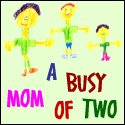
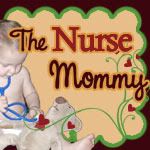






























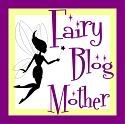
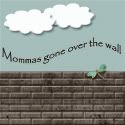


















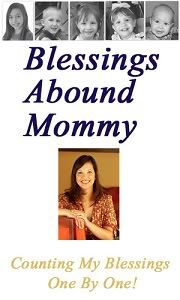


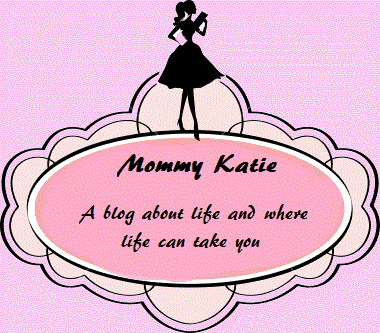














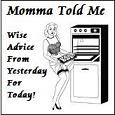
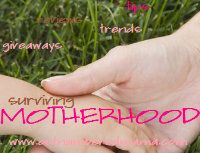



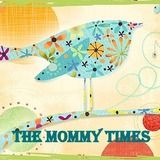


















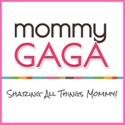













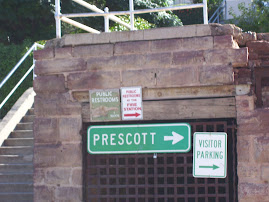










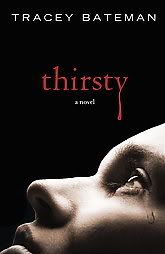







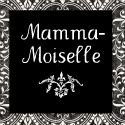



































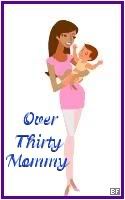











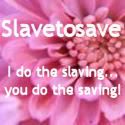







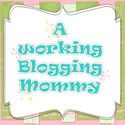












No comments:
Post a Comment